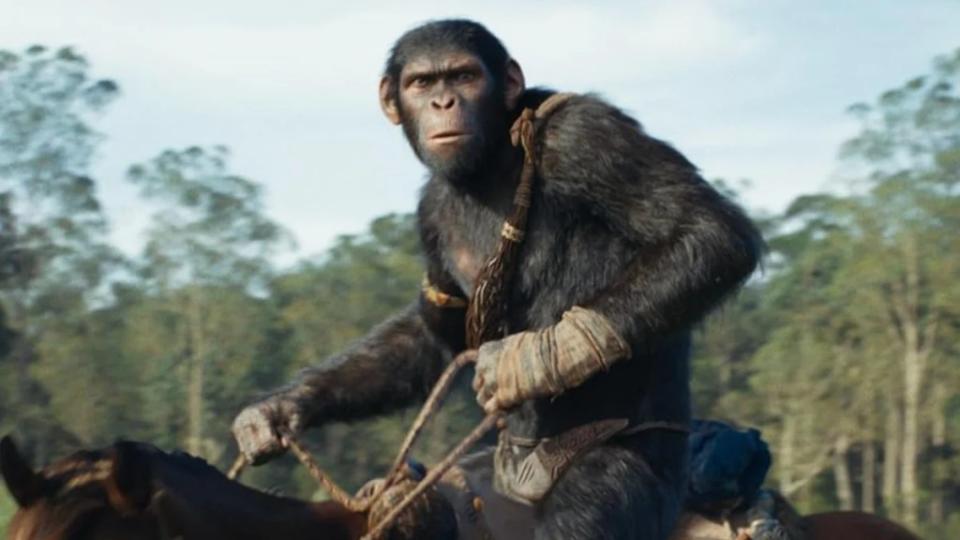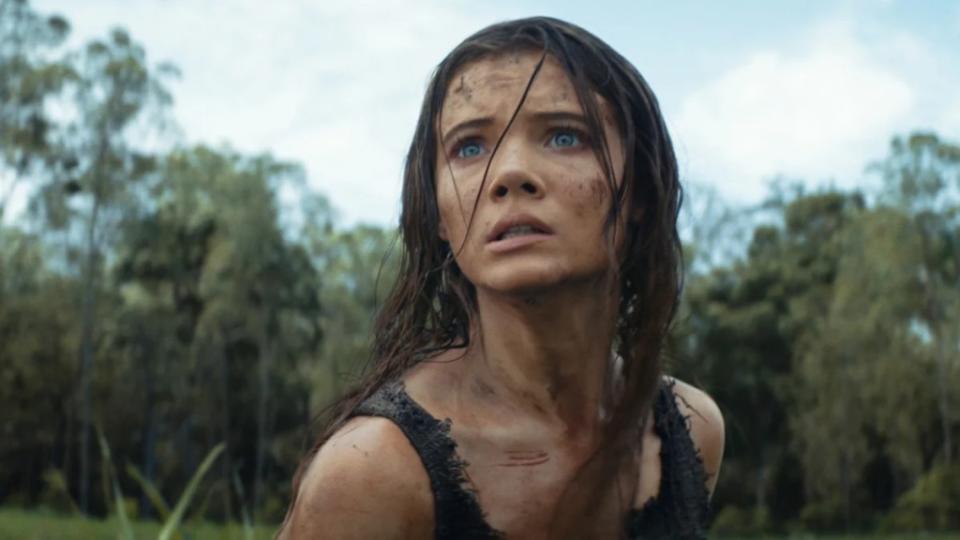How Filmmaker Wes Ball Conquered the ‘Kingdom of the Planet of the Apes’
Wes Ball was in trouble.
The filmmaker, who had steered the successful trilogy of “Maze Runner” films, had an ambitious adaptation of David Petersen’s “Mouse Guard” comic book series in the works. But when Disney purchased the 21st Century Fox assets, they canceled “Mouse Guard,” viewed at the time as too expensive and too niche.
“I was probably the least sad of the entire team on ‘Mouse Guard’ when it canceled. And I say that because some of most fun parts of making a movie is the early prep and beginning stages, when it’s all potential. There’s no compromises,” Ball told TheWrap. “I got to design every blade of grass of an entire world, I built every set in Unreal, I designed ridiculous amounts of concept art, I had so much fun. I was obviously sad. I want to see the movie made. But I got so much out of it.”
As a response to the cancelation, Ball released an early demo of footage online. The filmmaker said the test “wasn’t even part of the movie” but he wanted to share it anyway. That’s when he got a call from Emma Watts, who was at the time president of Fox. He was in trouble. She asked Ball about leaking the teaser: “What are you doing?” After they exchanged a few words (and she insisted he take the footage down), she then asked another question: “What would you do with ‘Planet of the Apes?’”
The “Planet of the Apes” franchise began in 1968 with the Charlton Heston-led classic and had gone on to become one of the crown jewels of the 20th Century portfolio, inspiring four sequels to the original film, a lucrative (if creatively bankrupt) Tim Burton remake and, beginning in 2011, a new trilogy of cutting edge films that proved to be both critical and commercial hits. The last film, Matt Reeves’ “War for the Planet of the Apes,” was released in 2017. It was time for a new trip to the Planet of the Apes.
“Kingdom” is born

At first, Ball didn’t know how to tackle the franchise. He told Watts that he wanted to think about it. I’m not sure I want to do that, Ball thought at the time. Eventually, he came up with a concept that he was excited about, later fleshed out by screenwriter Josh Friedman – this “Planet of the Apes” movie would be set in the distant future.
“I had this skepticism of how you follow up that last trilogy,” Ball said. “You need to have that distance so you’re not just constantly compared or tethered to that trilogy. Having that time jump was a big opening to me.”
From there, the ideas for what would become “Kingdom of the Planet of the Apes” started to gather and coalesce – he would focus on a younger ape this time, eventually named Noa, and that he would be part of an eagle clan, where each ape would have an eagle that they would form a bond with. He also know who the villain would be. “Pretty quickly I had this character idea of a Genghis Khan-type that was rediscovering electricity and who may or may not have some connection to Caesar,” Ball said, referring to the Andy Serkis character from the earlier trilogy.
Ball also knew that he had to have a human character in there somewhere, but wasn’t sure how to fit them in, especially when he knew he wanted the opening of the movie to be purely apes-focused. “Weirdly, humans are still a part of this world, they’re just diminished,” Ball said. “They are always going to be a part of the story somehow, because these movies at the core are ultimately about the relationship between apes and humans and can they live together? That’s the proxy for whatever social commentary that we’re exploring. That was always going to be a thing.”
Ball conceived of the movie at first being almost exclusively about Noa (Owen Teague), a young ape whose village is decimated and moved to a new settlement, but then the story slowly reveals itself to be about a pair of characters – Noa and Mae (Freya Allen), a human who hasn’t succumbed to the virus that made apes smarter and humans dumber. “Mae would be this puzzle that you sort of have to unwrap a little bit as the story goes,” Ball said. “It was just a matter of degrees on how capable or uncapable she was.”
Franchise DNA

“Kingdom of the Planet of the Apes” is littered with references to the original 1968 movie and its sequels – Noa and Mae pass giant scarecrows that are right out of the original film, there’s a vaguely “Beneath the Planet of the Apes”-style missile towards the end and even the music, by Ball’s “Maze Runner” collaborator John Paesano, contains nods to Jerry Goldsmith’s iconic score of the 1968 film as well as Michael Giacchino’s more recent scores. Ball actually instructed Paesano: “You’ve got to have one foot in Goldsmith and one foot in Giacchino and the rest is yours.” The filmmaker added, “Scoring this movie is really difficult because it doesn’t accept typical film music. It’s weird. It took us a long time to find the right spot. We’ll see.”
These references were embedded in Ball, who watched the original movie as a kid. “It captured my imagination,” Ball said. Images like the apes on the beach or the sequence where Heston’s character Taylor is hunted in grass stayed with Ball. (There’s a very similar sequence in “Kingdom of the Planet of the Apes.”) He was also fascinated by seeing the apes society in the 1968 version – their democracies and rituals. “We got to put our imaginative bent on it all, but that was always an interesting place to be,” Ball said, referring to the fact that his movie is set after the more recent trilogy but still before the events of the 1968 movie. “We were in the middle of that, these two points on either end. There’s been 10 movies now.”
Making this movie would have been impossible without Wētā FX, the New Zealand-based visual effects company whose groundbreaking visual effects made the previous three movies possible and who worked with Ball on some of the “Maze Runner” installments.
“I can’t say enough nice things about them,” Ball said. “They work miracles.” He said what was tricky about the movie was that you will make certain choices – about a performance, maybe, or the way a sequence is constructed, but it’ll be months before you see the end result. For a long time he would watch and work on the movie with the actors in their performance-capture garb – grey pajamas and dots painted on their faces. “And then boom, one day this shot comes in and just blows your way,” Ball said. “It’s a difficult process, but these guys know what they’re doing. And that’s their artistry on display.”
We asked Ball how he felt about the movie now.
“We left it all on the field. It won’t be for lack of trying. We all worked really, really hard on this thing for a long time. I think we’re all happy with it, we’re all proud of what we accomplished here with what we had. We just hope fans will find it a worthy kind of installment here in this in this franchise,” Ball said.
By the time “Kingdom of the Planet of the Apes” is released into theaters this week, he will have been working on the project for almost five years. “When I see the movie now, all I see are the little choices – I see the two frames I added on that cut because I struggled with it, I see the pixels that we’ve talked about for months, I see all the intricate stuff because I’m so close to it all.”
What’s next?
While Ball is currently in development on a live-action “Legend of Zelda” movie for Sony and Nintendo (“I’ve been a fan of Zelda for a long, long time. I feel like I know what it should be and we’re going work hard to make something great,” Ball promises), the “Planet of the Apes” franchise has endured for nearly 60 years. Certainly he must be thinking about where the series could go after “Kingdom of the Planet of the Apes?”
“We’ve got to ultimately see how this shakes out, but when we were writing this one, we felt like we had some good ideas for where we want this to go,” Ball said. “We’re anxious to get on that. We have lots of opportunities there in the ape/human dynamic, the continued struggle to coexist –lots of drama, lots of conflict and hopefully a lot of emotion. We’re hopefully going to be working on that very soon.”
While he’s unsure if “Zelda” or another “Apes” movie will be the next project on his dance card, Ball said, “It’s a good place to be and it’s a good problem to have.”
“Kingdom of the Planet of the Apes” is now playing exclusively in theaters.
The post How Filmmaker Wes Ball Conquered the ‘Kingdom of the Planet of the Apes’ appeared first on TheWrap.


